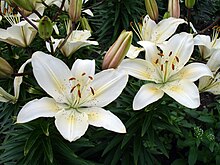 | |
Other name | USask |
|---|---|
| Motto | Deo et Patriæ (Latin) |
Motto in English | For God and Country |
| Type | Public |
| Established | 1907 |
Academic affiliations | ACU, CARL, UArctic, UASR, Universities Canada |
| Endowment | CAN$509.1 million [1] |
| Chancellor | Grit McCreath |
| President | Peter Stoicheff |
| Students | 26,694[1][2] |
| Undergraduates | 21,220 |
| Postgraduates | 4,630 |
| Location | , Canada |
| Campus | Urban |
| Colours | Green and yellow and white[3] |
| Nickname | Huskies |
Sporting affiliations | U Sports, CWUAA |
| Mascot | Howler (the Huskie) |
| Website | www |

The University of Saskatchewan (U of S, or USask) is a Canadian public research university, founded on March 19, 1907, and located on the east side of the South Saskatchewan River in Saskatoon, Saskatchewan, Canada. An "Act to establish and incorporate a University for the Province of Saskatchewan" was passed by the provincial legislature in 1907. It established the provincial university on March 19, 1907 "for the purpose of providing facilities for higher education in all its branches and enabling all persons without regard to race, creed or religion to take the fullest advantage".[4]52°7′47″N 106°37′58″W / 52.12972°N 106.63278°W[5][6] The University of Saskatchewan is the largest education institution in the Canadian province of Saskatchewan. The University of Saskatchewan is one of Canada's top research universities (based on the number of Canada Research Chairs) and is a member of the U15 Group of Canadian Research Universities (the 15 most research-intensive universities in Canada).[7][8]
The university began as an agricultural college in 1907 and established the first Canadian university-based department of extension in 1910. There were 120 hectares (300 acres) set aside for university buildings and 400 ha (1,000 acres) for the U of S farm, and agricultural fields. In total 10.32 km2 (3.98 sq mi) was annexed for the university.[9][10] The main university campus is situated upon 981 ha (2,425 acres), with another 200 ha (500 acres) allocated for Innovation Place Research Park.[9][11] The University of Saskatchewan agriculture college still has access to neighbouring urban research lands.[12] The University of Saskatchewan's Vaccine and Infectious Disease Organization (VIDO) facility, (2003) develops DNA-enhanced immunization vaccines for both humans and animals.[13][14] The university is also home to the Canadian Light Source synchrotron, which is considered one of the largest and most innovative investments in Canadian science. Discoveries made at the U of S include sulphate-resistant cement and the cobalt-60 cancer therapy unit. The university offers over 200 academic programs.
- ^ "USask reaches record enrolment". University of Saskatchewan. Retrieved 16 July 2024.
- ^ "2023/24 ACADEMIC YEAR SNAPSHOT" (PDF). University of Saskatchewan. Retrieved 16 July 2024.
- ^ "Logos". 18 August 2015. Archived from the original on 4 July 2015. Retrieved 28 August 2015.
- ^ "University of Saskatchewan Act" (PDF). Retrieved October 24, 2015.
- ^ "Deo et Patriae: Events in the History of the University of Saskatchewan: 1907". University of Saskatchewan. Retrieved 2007-06-24.
- ^ "History". University of Saskatchewan. Archived from the original on 2007-06-24. Retrieved 2007-06-24.
- ^ "Benchmarking and Rankings". leadership. Retrieved 2024-08-24.
- ^ "University of Saskatchewan - U15 Group of Canadian Research Universities". Retrieved 2024-08-24.
- ^ a b B. Beaton. "University of Saskatchewan". The Canadian Encyclopedia. Archived from the original on 2007-09-03. Retrieved 2007-06-24.
- ^ Don Kerr (1998). "The Beginnings". Retrieved 2007-06-24.
- ^ "Life Long Learning in Pharmacy – 6th International Conference". 2005. Archived from the original on 2007-03-20. Retrieved 2007-06-24.
- ^ MacPherson, Colleen (2007-03-09). "On Campus News (OCN)". University of Saskatchewan. Retrieved 2007-06-24.
- ^ Eggertson, Laura. "Innovation Canada – Vaccine Nation". Retrieved 2013-03-14.
- ^ Babiuk, Lorne B. "University of Saskatchewan Research – Discovery @ U of S: Mar 08, 2001". Retrieved 2007-09-11.